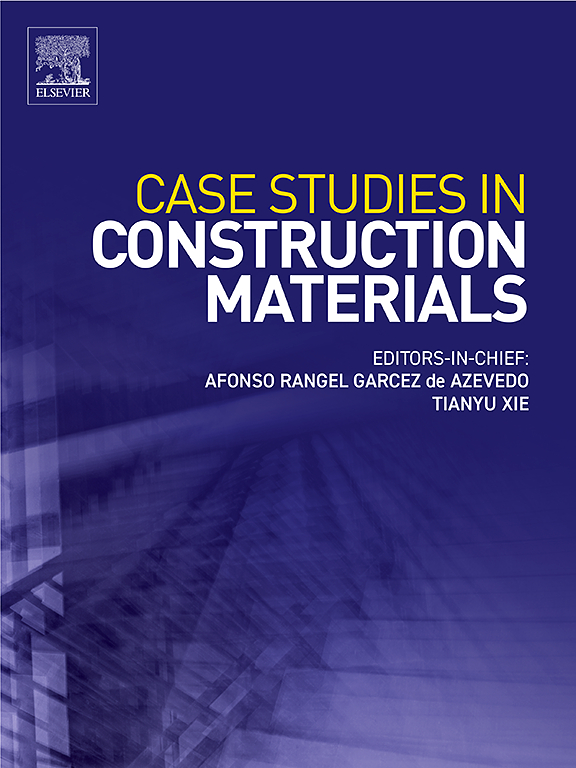Experimental and analytical study of temperatures developed by the heat of hydration of high-strength self-compacting mass concrete
IF 6.5
2区 工程技术
Q1 CONSTRUCTION & BUILDING TECHNOLOGY
引用次数: 0
Abstract
This study addresses the gap in research on large-scale high-performance concrete (HPC) structures that exhibit self-compacting characteristics and high compressive strength through a detailed case study. It examines the temperature evolution due to hydration heat in a significant HPC structure consisting of an L-shaped reaction slab and wall arrangement. It is heavily reinforced and constructed for a structural laboratory in Lima, Peru. The investigation involved comprehensive instrumentation of the laboratory's reaction slab and wall to assess the impact of boundary conditions on temperature dynamics. Utilizing fifteen thermocouples, temperatures were monitored at various depths, and their progression over time was analyzed. Findings revealed that the peak temperatures reached 78.3°C in the slab and 74.6°C in the wall. Notably, the timing of formwork removal played a critical role in the thermal behavior of the reaction wall, significantly affecting its heating and cooling rates compared to the reaction slab. Despite these variations, the maximum established temperature gradients were not surpassed. Furthermore, the study critically evaluates the ACI method for predicting peak temperatures, identifying an average prediction error of 11.25 % against experimental outcomes. These insights contribute valuable data on the thermal performance of HPC in substantial structural elements, with broader implications for design and construction practices.
高强自密实大体积混凝土水化热温度的实验与分析研究
本研究通过详细的案例研究解决了大型高性能混凝土(HPC)结构的研究空白,这些结构具有自密实特性和高抗压强度。它研究了由l型反应板和壁布置组成的重要HPC结构中水化热引起的温度演变。它是为秘鲁利马的一个结构实验室而精心加固和建造的。调查涉及实验室反应板和墙的综合仪器,以评估边界条件对温度动力学的影响。利用15个热电偶,在不同深度监测温度,并分析其随时间的变化。结果表明,板坯的峰值温度为78.3℃,壁面的峰值温度为74.6℃。值得注意的是,与反应板相比,拆除模板的时间对反应墙的热行为起着关键作用,显著影响其加热和冷却速度。尽管存在这些变化,但并未超过最大确定温度梯度。此外,该研究对预测峰值温度的ACI方法进行了批判性评估,确定了与实验结果相比的平均预测误差为11.25 %。这些见解为高性能混凝土在实质性结构构件中的热性能提供了有价值的数据,对设计和施工实践具有更广泛的影响。
本文章由计算机程序翻译,如有差异,请以英文原文为准。
求助全文
约1分钟内获得全文
求助全文
来源期刊

Case Studies in Construction Materials
Multiple-
CiteScore
7.60
自引率
19.40%
发文量
842
审稿时长
63 days
期刊介绍:
Case Studies in Construction Materials provides a forum for the rapid publication of short, structured Case Studies on construction materials. In addition, the journal also publishes related Short Communications, Full length research article and Comprehensive review papers (by invitation).
The journal will provide an essential compendium of case studies for practicing engineers, designers, researchers and other practitioners who are interested in all aspects construction materials. The journal will publish new and novel case studies, but will also provide a forum for the publication of high quality descriptions of classic construction material problems and solutions.
 求助内容:
求助内容: 应助结果提醒方式:
应助结果提醒方式:


